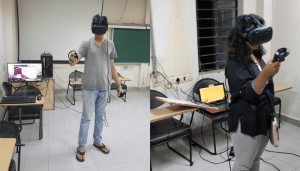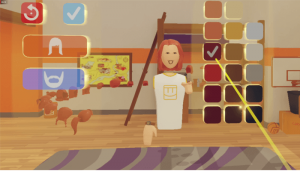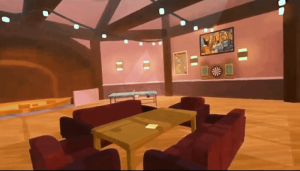The Indian match-making scene has gotten severely disrupted thanks to the advent of technology. Now, Human Computer Interaction (HCI) researchers at the International Institute of Information Technology Hyderabad have attempted to analyse the effects of virtual reality (VR) on dating and find the envelope being pushed even further.
University students’ interactions on chat-based Tinder as well as VR were compared
VR scored over Tinder in terms of gauging potential ‘real’ date material
Much before the pandemic struck us, there had been a gradual shift towards online engagement. Covid-19 of course accelerated the trend. But increasingly it’s not enough to just have a mere online equivalent to the ‘real’ world; people are seeking out richer experiences and leveraging technological advances in their quest for the same. Dating is no different. An experimental study by researchers from the Computational Humanities program reveals how social interactions, especially the romantic kind can benefit from a fully immersive experience.
Technology In The Social Context
In the Indian context, the process of selection of potential life partners has evolved over the years. If matches were at first based solely on the recommendations of close friends and relatives, the scope gradually expanded through the outreach of newspaper advertisements, the proliferation of matchmaking websites, and now through the explosion of dating apps that are within reach of the ubiquitous smart phones. Moving beyond Hollywood and science fiction, the advent of virtual reality (VR) is now poised to turn ‘traditional’ digital dating practices on its head.
In a bid to study the dynamics of such social interactions in the virtual reality medium, IIITH researchers Tejaswini Yeleswarapu and Pranav Nair under the guidance of Prof. Nimmi Rangaswamy undertook a comparative study, the research findings of which have been accepted for submission to the Computer Supported Cooperative Work and Social Computing (CSCW) journal. “While this is a specific experiment in a specific cultural context, it became a unique and versatile kind of HCI engagement with elements of qualitative and quantitative analysis, social science and human computer interaction,” says Prof. Rangaswamy, who heads the Social And Human Applications for AI (SAHAAI) centre at IIITH.

What They Did
For the study, 15 pairs of heterosexual university students between the ages of 18 and 23 were selected. “In the first phase of the experiment, we manually emulated the matchmaking process of online dating apps like Tinder by sending out preference forms to both male and female participants,” says Tejaswini Yeleswarapu, the first author of the study. For the first three days, the matched pairs interacted only over the hugely popular chat-based app Tinder. On the fourth day, they were made to interact over a customized platform RecRoom, a VR game. The same participants were paired up in VR to gauge experiences in both mediums, but in order to remove bias, their identities were kept anonymous. “They didn’t know they were interacting with the same person(s) in the VR setup,” says Tejaswini. Once the VR experience was complete, a detailed interview lasting 75-90 minutes long was conducted with the pairs. The users were questioned and asked to compare various parameters of both the mediums, such as the degree of interactivity, self projection, strength of attraction, how voice, touch, and bodily immersion compare with emojis, gifs and memes, as well as miscellaneous other issues like security, and novelty.

What They Found
VR emerged as a powerful preference over Tinder in terms of gauging potential of an emerging relationship or an overall dating experience. And it’s not difficult to see why. The VR environment was set out to replicate a ‘real’ romantic setting complete with comfortable couches, ping pong table and a dart board, a dimly-lit bar area, stage for karaoke and so on. The immersiveness of this experience was further amplified through the creation of avatars where the facial and bodily expressions are a result of participants’ body language and voice. Since touch is a very important dimension reflecting one’s interest in the courtship ritual, the VR setup allowed users to physically move towards and virtually “touch” each other through haptics. “Essentially this means that the VR controllers ‘vibrate’ upon virtual contact making dating or flirting extremely life-like,” explains Tejaswini. Due to the multi-dimensionality present in a VR setup, the focus is not so much on the person as it is on the environment. This allows for significant diffusion of social tensions that typically exist in a dating scenario. The study found that 28 out of the 30 respondents felt that VR allowed them to take an informed decision on whether to meet in real. In other words, thanks to VR, the users modified their assessment of their partners. “The same partner who was found unworthy after a chat on Tinder was labelled as potential date material after the VR meet and vice-versa,” says Tejaswini.

Implications
As far as Prof. Rangaswamy is concerned, reality and virtuality do not exist as two binary perspectives. Although VR is popularly referred to as the technology used to imitate a real-life experience, she prefers to liken it to a dimension to life itself. “For me this entire experiment is to bring in a new dimension to human relationships where you have another way to approach reality, a certain way of looking at people, and a certain way of dating which will probably change your ideas of romance,” she says. As HCI researchers, their concern is about how technology formats engender social interactions. “From this study, we could make observations that can be generalized and applied to other social settings as well,” says Prof. Rangaswamy. Features of VR that influenced romantic interactions found favour due to their ability to mimic a real-life dating situation. They include spontaneity in real time, immediate feedback through verbal and non-verbal cues, the ability to control the experience, either by initiating the conversation – as revealed by a majority of the female participants – or the ability to walk away at will in unpleasant circumstances. Despite current shortcomings of VR such as the non-pervasiveness of the technology itself, requirement of a time commitment, the inability to multitask, and the ethical issues associated with it, Tejaswini emphasizes that even non-romantic or platonic interactions can become wholesome experiences with the help of VR. She concludes by recommending some future VR dating design applications that marry the immersiveness of VR with certain chat-like features found in Tinder.



